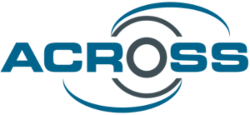Marit Hoefsloot (Concept Developer at Waag Futurelab) presented research on design for equity at the 4TU Ethics and Technology Research Day on the 20th of September 2023. During this high-level event, researchers of the four technical universities in the Netherlands presented their work in different domains of philosophy and ethics of technology.
The presentation was based on the joint research of Hoefsloot and Simone van der Burg (Head of Programme at Waag) into design methodologies for digital public services and their impact on inclusion and equity. This is inspired by ACROSS, where WAAG designed an extensive user journey methodology including the creation of two personas. These personas are fictional main characters in the designed user journey. The description of the personas includes the desires, goals and capabilities of potential end users of the ACROSS platform, which were collected during the user research in the beginning phases of the project.
Personas are widely used in design processes and offer a way to tailor design activities to the values and needs of potential users. Benefits are that it is a practical, goal-oriented way to realise user-centred designs. There are, however, also drawbacks that deserve to be taken into account, which are described in the literature (e.g., Jansen et al., 2021; Salminen et al., 2022; Tu et al., 2010; Viana & Robert, 2019). Any choice of personas has limitations (it is impossible to include all potential users in design) and it is important to think carefully about who to include and exclude. There’s a risk that the description of a persona is abstract and inaccurate and offers a very narrow representation of the potential user population. To avoid this, the design team needs to do extensive user research, by means of surveys and qualitative research. Careful attention should be paid to the ‘usual’ users who will likely find their way to the services, as well as to potential users who do not regularly use these services but who could benefit from them. This is important, as the ambition of the digitalisation of public services is that it will make services more accessible for everyone.
Once accurate personas are created, their implementation also poses a challenge. The assumption is that project members are able to use personas to inform the direction of design and development of the service. However, there are no guidelines on how digital public service developers are supposed to use the persona, combine it with their general design knowledge and develop a valuable answer to the user’s needs. Concrete guidance as to how values and needs of personas are responsibly addressed in the design process, is lacking.
Challenges in the exploration of (potential) users, which can be done in a more and less elaborate way, and in the eventual selection of personas that should be taken into account, which can be limited or broad and varied, are extensively described in the literature. However, insufficient focus has been paid to use of personas for the design of digital public services, and its consequences on social equity and fairness. That is what WAAG research adds, where they are exploring whether and to what extent the persona method is able to produce services that realise equity. WAAG preliminary findings suggest that to ensure an e-governance service benefits all users and empowers them to achieve their goals in an equally effective, meaningful, and engaging manner, the personas must ideally reflect the needs and capabilities of the entire population. This ideal is sometimes difficult to realise within the time and budget available for a design project. But it shapes the activities: it means, first of all, that persona creation methods must be extensive and thorough, and that efforts should be made to include representatives of different social groups. Furthermore, when selections of personas are made on the basis of this extensive research, then arguments should be provided for the choices that are made. It is important to be aware of the potential exclusion such choices of personas might bring about and the societal impacts this may have, and reflect on alternative ways to address them in order to ensure equitable and fair design of digital public services.
List of references:
Jansen, B.J., Jung, S.-G., Salminen, J., Guan, K. W., & Nielsen, L. (2021). Strengths and Weaknesses of Persona Creation Methods: Guidelines and Opportunities for Digital Innovations. In Proceedings of the 54th Hawaii International Conference on System Sciences (pp. 4971). http://dx.doi.org/10.24251/HICSS.2021.604
Salminen, J., Guan, K., Jung, S.-G., Chowdhury, S. A., & Jansen, B. J. (2020). A Literature Review of Quantitative Persona Creation. In Proceedings of the 2020 CHI Conference on Human Factors in Computing Systems (CHI ’20) (pp. 1–14). Association for Computing Machinery. https://doi.org/10.1145/3313831.3376502
Tu, N., Phuong, M., Hieu, P., & Gia, N. (2010). Combine Qualitative and Quantitative Methods to Create Persona. In 2010 3rd International Conference on Information Management, Innovation Management and Industrial Engineering (pp. 597-603). Kunming, China. https://doi.org/10.1109/ICIII.2010.463
Viana, G., Robert, JM. (2016). The Practitioners’ Points of View on the Creation and Use of Personas for User Interface Design. In: Kurosu, M. (eds) Human-Computer Interaction. Theory, Design, Development and Practice. HCI 2016. Lecture Notes in Computer Science, vol 9731. Springer, Cham. https://doi.org/10.1007/978-3-319-39510-4_22

